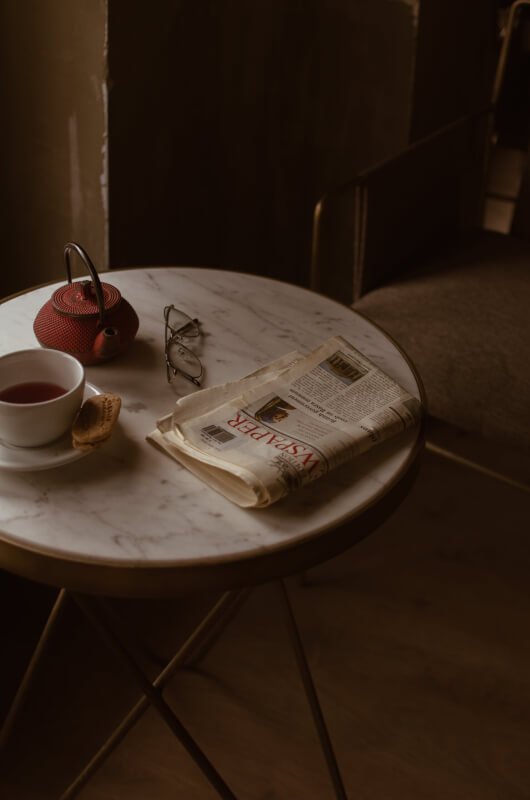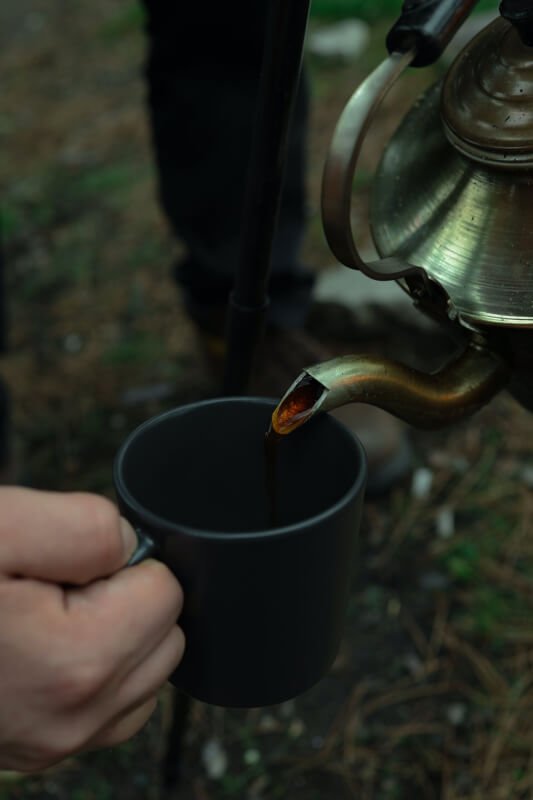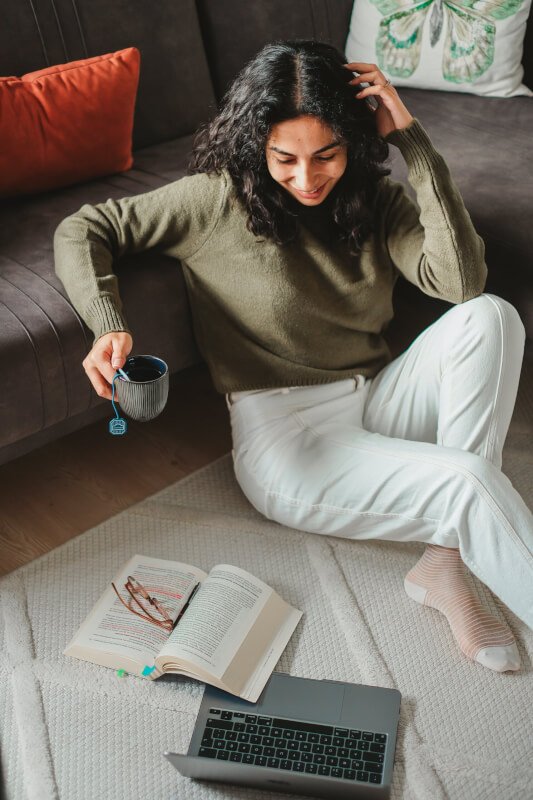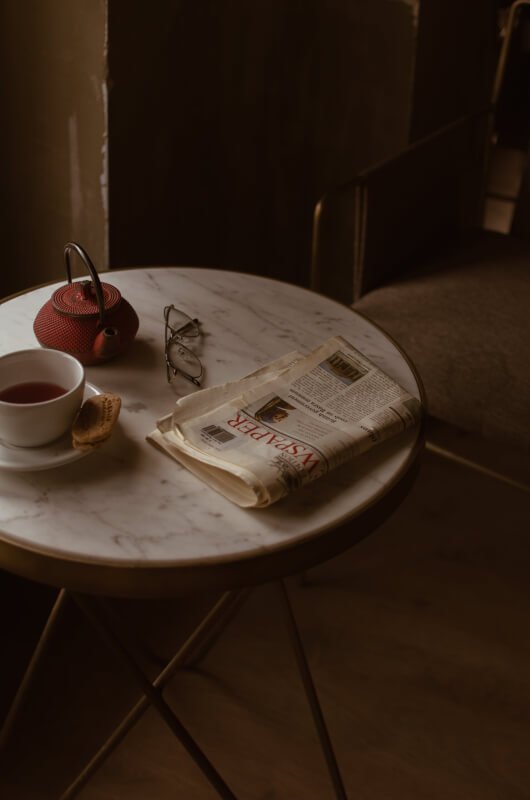Are you looking to enhance your tea-drinking experience and achieve the perfect balance of flavor and relaxation? Look no further! In this article, we will explore a variety of tea brewing techniques that will transform your tea into a soothing and calming treat for both your taste buds and your mind. Whether you prefer black tea, green tea, or herbal blends, we have tips and tricks to ensure your tea-brewing journey is a delightful and enjoyable one. So grab your favorite tea leaves and get ready to embark on a peaceful and serene tea-drinking adventure!

I. Choosing the Right Tea
A. Consider your taste preferences
When choosing the right tea, the first step is to consider your taste preferences. Think about whether you enjoy bold and robust flavors or prefer something more delicate and floral. If you are unsure, start with a mild and versatile tea like green tea or white tea, which offer a balanced taste profile. Additionally, take into account if you prefer herbal teas or teas made from Camellia sinensis, the plant from which traditional teas are derived.
B. Explore different tea varieties
To truly enjoy the experience of tea brewing, it’s essential to explore and experiment with different tea varieties. From the earthy tones of pu-erh tea to the fragrant aroma of jasmine tea, the world of tea offers a wide range of flavors and aromas to suit every palate. Take your time exploring different tea varieties and try to appreciate the unique characteristics they bring to your cup.
C. Select high-quality tea leaves
No matter which tea variety you choose, it’s crucial to select high-quality tea leaves. Look for teas that are sourced from reputable tea gardens and have been processed with care. High-quality tea leaves will ensure a more flavorful and enjoyable tea experience. Additionally, opt for loose leaf tea rather than tea bags, as loose leaf tea tends to offer better flavor and aroma due to its larger and less processed leaves.
II. Water Temperature
A. Different teas require different water temperatures
Water temperature plays a significant role in steeping tea properly. Different tea varieties require different water temperatures to bring out their best flavors. For example, delicate green teas are best brewed with water temperatures between 140°F (60°C) and 160°F (71°C), while black teas can be brewed at higher temperatures, between 190°F (88°C) and 205°F (96°C).
B. General guidelines for water temperature
If you are unsure about the appropriate water temperature for a specific tea variety, there are general guidelines you can follow. For delicate green and white teas, let the boiled water cool for a few minutes before pouring it over the tea leaves. For oolong and black teas, bring the water to a rolling boil and then let it cool for a moment before steeping. Herbal teas often require boiling water to extract their flavors fully.

III. Preparing the Water
A. Filtering water
To ensure a clean and pure tea experience, it’s recommended to filter your water before brewing tea. Filtering will remove any impurities or chlorine that may affect the taste of your tea. You can use a water filter pitcher or attach a filter to your faucet to achieve clean water for brewing.
B. Boiling water effectively
When boiling water for tea, it’s essential to do so effectively to avoid any unwanted flavors. Use a kettle or pot with a tight-fitting lid to prevent heat loss and boil the water until it reaches the desired temperature. Avoid overboiling the water, as this can deplete the oxygen content, resulting in a flat-tasting tea. It’s also important to use fresh water for each brew to ensure the best flavor.
IV. Measuring and Using Tea Leaves
A. The right amount of tea leaves
The amount of tea leaves used for brewing can significantly impact the strength and flavor of your tea. As a general rule, use one teaspoon of loose leaf tea per cup of water. However, this can be adjusted according to personal preference. If you prefer a stronger cup of tea, you can increase the amount of tea leaves, or if you like a milder taste, decrease the quantity.
B. Different techniques for measuring tea leaves
There are different techniques for measuring tea leaves, including using measuring spoons, tea scales, or even just estimating with your eye. While more precise measurements can be achieved with specialized tools, using your intuition and adjusting to taste is perfectly acceptable. Experiment with different measurement techniques and find what works best for you.
C. Factors affecting the strength of tea
Apart from the amount of tea used, several factors can affect the strength of your tea. These include water temperature, steeping time, and the quality of the tea leaves themselves. Adjusting these variables can help you achieve the perfect strength for your taste preferences. Don’t be afraid to experiment and make adjustments until you find your ideal cup of tea.

V. Steeping Time
A. The optimal steeping time for different teas
Steeping time is crucial for extracting the ideal flavors from tea leaves without leaving them overly bitter or weak. Different tea varieties have different recommended steeping times. For green teas, a shorter steeping time of 1-3 minutes is usually recommended, while black teas typically benefit from longer steeping times of 3-5 minutes. Herbal teas, on the other hand, can be steeped for 5-7 minutes to fully extract their flavors.
B. Adapting steeping time to personal preference
While there are recommended steeping times for each tea variety, the optimal steeping time may vary according to personal preference. If you prefer a stronger cup of tea, you can extend the steeping time, but be mindful not to go too far as it may make the tea bitter. If a milder taste is preferred, you can reduce the steeping time. Adjusting the steeping time allows you to customize your tea to suit your individual taste buds.
VI. Brewing Methods
A. Classic brewing in a teapot
Classic brewing in a teapot involves pouring hot water over the tea leaves and allowing them to steep before pouring the brewed tea into cups. This method allows for multiple servings and is perfect for sharing tea with friends or enjoying a leisurely afternoon teatime. Teapots come in various materials, such as porcelain, clay, or glass, each imparting its unique characteristics to the tea.
B. Using a tea infuser
A tea infuser is a popular and convenient way to brew tea. It consists of a small perforated container that holds the tea leaves while allowing water to flow through, extracting the flavors. Simply place the desired amount of tea leaves in the infuser, immerse it in hot water, and let it steep. Tea infusers come in various shapes and sizes, ensuring there is one suitable for any cup or mug.
C. Making tea with a French press
While commonly used for coffee, a French press can also be used to brew tea. It provides an alternative method that allows for a full immersion of the tea leaves, resulting in a robust and flavorful cup of tea. Add the desired amount of tea leaves to the French press, pour hot water over them, and let them steep for the desired time. Afterward, slowly press down the plunger to separate the brewed tea from the leaves.
D. Cold brewing techniques
Cold brewing is an excellent method for enjoying the refreshing flavors of tea during hot summer days. To cold brew tea, add the desired amount of tea leaves to a pitcher filled with cold water and let it steep in the refrigerator for several hours or overnight. Cold brewing imparts a smooth and less bitter taste to the tea, making it a popular choice for those who prefer a milder flavor profile.

VII. Enhancing the Tea Experience
A. Experimenting with flavor additions
Enhancing your tea experience can be done by experimenting with flavor additions. Consider adding slices of fresh citrus fruits like lemon or orange to provide a zesty and tangy twist to your tea. You can also explore adding herbs like mint or basil for a refreshing aroma, or even experiment with a touch of honey or maple syrup for a hint of sweetness. Let your creativity and taste buds guide you in finding flavor combinations that enhance your tea.
B. Trying different sweeteners
Sweetening tea is a personal preference, and there are various options to choose from. Traditional sugar or honey are classic choices that add sweetness to your tea, but you can also explore alternatives like stevia or agave syrup for a healthier option. Keep in mind that some teas, especially delicate ones, may be enjoyed without any sweetener to fully appreciate their natural flavors.
C. Incorporating herbs and spices
Adding herbs and spices to your tea can create unique and flavorful blends. Consider infusing your tea with cinnamon sticks, cardamom pods, or fresh ginger for a warming and aromatic cup of tea. You can also experiment with dried flowers like lavender or rose petals to add a touch of elegance and fragrance to your brew. Mixing and matching different herbs and spices can lead to delightful flavor combinations.
D. Pairing tea with food
Tea pairing is an excellent way to elevate your tea experience. Just as wine complements certain types of food, different teas can enhance the flavors of specific dishes. For example, a fragrant jasmine tea pairs well with dishes that have delicate flavors, while a bold black tea can be a perfect accompaniment to rich chocolate desserts. Experiment with tea and food pairings to discover exciting combinations that please your palate.
VIII. Proper Tea Storage
A. Protect tea from air and moisture
To maintain the freshness and quality of your tea, it’s important to protect it from air and moisture. Air and moisture can degrade the flavors and aromas of tea leaves over time. Store your tea in airtight containers to minimize exposure to air, and keep it away from excessive humidity, such as near the stove or in the refrigerator. It is also recommended to store different tea varieties separately to prevent flavor cross-contamination.
B. Preferred storage containers
When it comes to tea storage containers, there are various options to choose from. While some prefer traditional tins, others opt for glass jars to showcase the beautiful leaves. Whatever container you choose, make sure it has an airtight seal to prevent air and moisture from entering. Additionally, consider using opaque or dark-colored containers to protect the tea from light exposure, as light can also degrade its quality.

IX. Troubleshooting Tips
A. Fixing bitter or too weak tea
If your tea turns out too bitter, it may be a result of oversteeping or using too high a water temperature. To counteract the bitterness, try reducing the steeping time or using slightly cooler water in your next brew. Conversely, if your tea is too weak, consider increasing the amount of tea leaves used or extending the steeping time. Remember that personal taste preferences vary, so these adjustments should be tailored to your liking.
B. Dealing with oversteeped tea
Accidentally oversteeping your tea can result in an unpleasant bitter taste. To salvage oversteeped tea, try diluting it with some hot water or adding a few ice cubes to create an iced tea version. You can also try blending it with flavors like lemon or honey to mask the bitterness. However, it’s best to prevent oversteeping by setting a timer or using a tea infuser with a built-in timer to ensure optimal steeping.
C. Addressing water quality issues
The quality of water used for brewing tea can impact the overall taste. If you notice off-flavors or a metallic taste in your tea, it may be due to the water quality. Using filtered water or spring water can help improve the flavor, as it reduces any impurities that affect the taste. Some tea enthusiasts even use specific mineral water to enhance the natural flavors of the tea leaves. Experimenting with different water sources can lead to a more enjoyable tea experience.
X. Relaxation Techniques
A. Creating a calm tea environment
Tea brewing can be a serene and relaxing experience when done in the right environment. Create a calm tea environment by finding a quiet and comfortable space where you can fully immerse yourself in the process. Dim the lights, play soothing music, and surround yourself with candles or natural elements like plants to enhance the ambiance. By setting the stage for tranquility, you can fully enjoy the meditative qualities of tea brewing.
B. Mindful tea brewing
Practicing mindfulness during tea brewing involves focusing your attention on the present moment and fully engaging with each step of the process. Notice the sound of boiling water, the aroma of the tea leaves, and the sensations as you pour hot water over them. By bringing your awareness to the present, you can cultivate a sense of mindfulness and relaxation while brewing your tea.
C. Incorporating tea rituals
Tea rituals have been practiced for centuries to create a sense of mindfulness and reverence for the tea. Incorporate tea rituals into your brewing routine by following specific steps, such as gracefully handling the teapot or tea infuser, and pouring the tea in a deliberate and mindful manner. These rituals can help create a deeper connection with the tea and promote a sense of relaxation and intentionality in the process.


